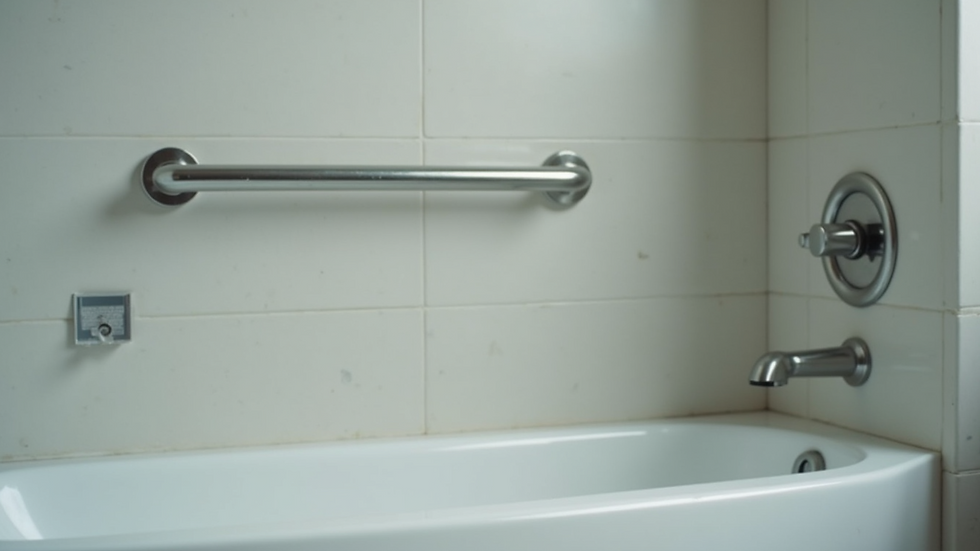Improve Your Living Space with Home Safety Assessments
- John Autry
- 4 days ago
- 4 min read
When it comes to making our homes safer, it’s easy to overlook the little things. But those little things can make a big difference, especially for seniors, veterans, and anyone with special accessibility needs. We want to help you create a living space that feels secure, comfortable, and just right for your lifestyle. That’s where home safety checks come in. Think of them as a friendly, expert eye scanning your home for anything that might trip you up or cause trouble down the road.
Let’s dive into how these checks work, why they matter, and how you can take action today to protect your loved ones and yourself.
What Are Home Safety Checks and Why Do They Matter?
Home safety checks are like a health check-up for your house. They look at everything from the floors to the lighting, the bathroom to the kitchen, and even the outside steps. The goal? To spot hazards before they cause accidents.
For example, loose rugs might seem harmless, but they’re a common cause of falls. Poor lighting can make it hard to see obstacles. Grab bars missing in the bathroom? That’s a red flag for slips. These checks help catch those issues early.
Here’s what a typical home safety check might cover:
Flooring: Are there loose carpets or slippery surfaces?
Lighting: Is every room well-lit, especially hallways and stairs?
Bathroom safety: Are there grab bars and non-slip mats?
Stairways: Are handrails sturdy and easy to grip?
Entryways: Are there ramps or steps that need attention?
Smoke and carbon monoxide detectors: Are they working and placed correctly?
By addressing these points, you’re not just preventing accidents—you’re boosting confidence and independence. Imagine walking through your home without worrying about a fall or a trip. That peace of mind is priceless.

How Home Safety Checks Help You Stay Independent
Staying in your own home as you age or manage a disability is a top priority for many. But independence means different things to different people. For some, it’s about moving freely without fear. For others, it’s about having the right tools and modifications to make daily tasks easier.
Home safety checks help by:
Identifying risks: They find trouble spots before they become emergencies.
Recommending changes: From simple fixes like adding night lights to bigger projects like installing ramps.
Supporting caregivers: Giving family members peace of mind that their loved ones are safe.
Customizing solutions: Tailoring safety measures to your unique needs and home layout.
For example, a veteran with limited mobility might benefit from grab bars and a stairlift. A senior who loves cooking might need better lighting and slip-resistant mats in the kitchen. These checks aren’t one-size-fits-all—they’re about making your home work for you.

Who Does Home Safety Assessments?
You might wonder who’s qualified to perform these checks. It’s not just anyone with a checklist. Professionals trained in home safety assessments bring experience and knowledge to the table. They understand the unique challenges faced by seniors, veterans, and people with disabilities.
These experts often work with:
Physical therapists who know mobility needs
Case managers coordinating care plans
Home care agencies supporting daily living
Veterans’ organizations focused on accessibility
Specialists in ADA compliance and modifications
They don’t just point out problems—they offer practical solutions and can even help arrange for installations or repairs. This teamwork ensures your home is not only safer but also more comfortable and accessible.
If you want to learn more about what a professional home safety assessment looks like, check out this home safety assessments service. It’s a great starting point to see how experts can help.

Simple Steps You Can Take Right Now
Waiting for a professional visit is smart, but you don’t have to wait to start making your home safer. Here are some easy things you can do today:
Clear the clutter: Keep walkways free of cords, shoes, and other obstacles.
Add lighting: Use night lights in bedrooms, bathrooms, and hallways.
Secure rugs: Use non-slip pads or remove loose rugs altogether.
Install grab bars: Especially in the bathroom near the toilet and tub.
Check smoke detectors: Test them monthly and replace batteries yearly.
Use sturdy furniture: Avoid chairs or stools that wobble or are too low.
These small changes can make a big difference in preventing falls and accidents. Plus, they’re easy to do and don’t require a big budget.
Keeping Safety a Priority Over Time
Safety isn’t a one-time fix. As needs change, so should your home’s safety features. Maybe a new medication affects balance, or mobility changes with time. Regular check-ins and updates keep your home ready for whatever comes next.
Consider setting a schedule to review your home’s safety every six months or after any major life change. Keep a list of what’s working and what needs improvement. And don’t hesitate to reach out to professionals for help with bigger projects or questions.
Remember, your home should be a place of comfort and security. Taking these steps helps you and your family enjoy peace of mind and independence for years to come.
We hope this guide helps you see the value in home safety checks and inspires you to take action. Your living space can be a fortress of safety and comfort with just a little attention and care. Let’s make it happen together!

.png)
.webp)

Comments